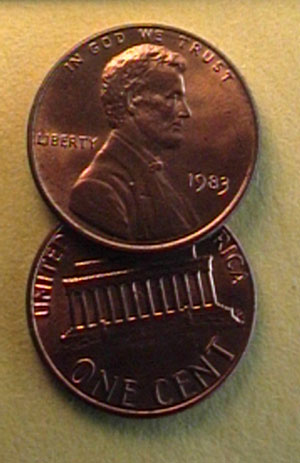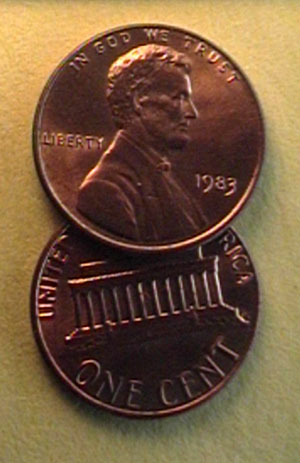Realism: the "ortho" view
Not all stereo images are necessarily realistic looking. All manner of distortions and special effects can be introduced into a stereo image, either deliberately or incidentally. Depth may be exagerrated or compressed, and the apparent scale of the subject may be enlarged or reduced. These effects are the result of variables associated with the picture taking, and/or in combination with the viewing method. When a view does reproduce spatial realism faithfully, it is called an orthoscopic view.
For an "ortho" view, the angular field of view (as defined by the focal length of the lens) of the camera must match the angular field of vision of the observer (this could be defined by the focal length of the viewer's optics). Furthermore, the two viewpoints recorded by the camera must be separated by the same distance as the distance between a typical observer's eyes: about 65mm. This distance is called the "stereobase" or "interaxial" separation (also i/a separation).
On this website, viewing is done without the aid of optics, so the field of view of the observer will be a function of image size on screen and the distance from the observer's eye to the screen. Because of the limitations of presentation on a video screen, not all of the views on this site will appear orthoscopic. However, I have prepared most of the enlarged close-ups and anaglyphs to appear close to "ortho" on most computer monitors.
I shoot slides to be viewed in an inexpensive viewer that has 50mm focal length optics. Such a viewer presents the highest quality, affordable three dimensional image. Therefore, to achieve maximum realism in this viewer, I only shoot with 50mm lenses on my camera.
Depending on the type of subject, a stereo photographer may use techniques that cause the resultant view to look necessarily unrealistic, but nevertheless contain impressive three-dimensionality.
Macrostereo
One such example is with macro stereography. Here the two viewpoints that are recorded are brought closer together, to a distance scale more in line with the size of the subject. There's nothing quite like a stereo photograph of an ant. But to photograph an ant for interesting stereo viewing requires that the ant looks huge! It's not very realistic (there are no huge ants...), but it is a valid and popular form of stereography. Look at this nice example of a macro view of a couple of pennies, on display courtesy of Gabriel Jacob:


Hyperstereo
The opposite example is the so-called hyperstereo. It is an appropriate technique for very large subjects, such as a city skyline or aerial view. The two viewpoints recorded are relatively far apart (up to dozens of feet), and this gives greater spatial relief to the subject. Unfortunately it also causes the subject to appear miniaturized. Below is an example of a hyper aerial view of Boston, on display courtesy of Ron Labbe.


|- H o m e -|- P o r t r a i t s -|- T E C H N O B O T -|- C O M W O R K -|
Unless otherwise noted, all contents of this page, individual or aggregate, are copyright 1999 Boris Starosta. All rights reserved. Unauthorized duplication is a violation of applicable laws, and is destructive of free enterprise, creative expression, and the human spirit. All other product names mentioned in these pages are used for identification purposes only, and may be trademarks or registered trademarks of their respective companies, and the exclusive property of their respective owners.